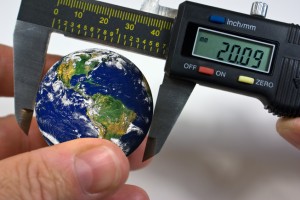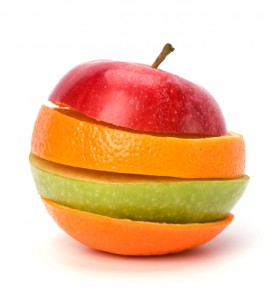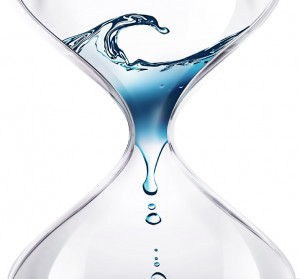* Be warned: this article goes into a fair amount of detail. No irony intended.
You may already be aware of definitions of poverty and the associated ‘poverty line’, based on average GDP per capita figures, of under US$2 per day for the given population. By this same, single metric, ‘extreme poverty’ has been defined as occurring beneath a threshold of US$1.25 a day. The UN estimates that some 1.75 billion people fall into the latter category, or some quarter of the world’s population right now.
We define poverty as the ‘Relative absence of the 7 Humanitarian Basics’, namely: water, food, clothing, shelter, healthcare, engagement and freedom from oppression. Such an explicit definition is particularly useful, as it provides 7 key sets of things that we can then begin to measure. That approach to measuring poverty is consistent across the 7 Layer Poverty Model and the associated Assessment methods by which the measurements are captured. There are 2 complementary and consistent options: the Simple Assessment and the Detailed Assessment. Both recognise a common underlying scale of comparative measurement, but the former condenses this scale into a simpler ‘high/medium/low/none’ range of category options, for ease of application.
Similarly, both types of Assessment for measuring poverty use the idea of a comparative scale, illustrated by subjective, experience-based personal statements. However, the Detailed Assessment adopts a scale of 0-9. This allows for greater differentiation between experiences, when it comes to the overall goal and purpose of measuring poverty relatively. We are providing these tools to assist with widespread practical applications, rather than academic, or merely intellectual exercises.
The Detailed Assessment takes the following approach. Looking at the Simple Assessment Standard statements (accessible as an online Global Poverty Survey from this site’s Main Menu), it is apparent that any individual will always appear somewhere on a notional ‘measuring poverty’ scale, when compared alongside the planet’s 7 billion or so other inhabitants. However, even the Detailed Study cannot entertain the idea of 7 billion different grades to accommodate such actual diversity. Hence, we standardise on the common idea of bands and thresholds, which will inevitably involve a compromise against the full range of actual lived experience on the ground. We accept the implications of such compromise, for the sake of overall Model simplicity, practicality and application.
Those thresholds are meant to be drawn at ‘reasonable’ boundaries between human experiences. Hence, for wellbeing considerations, we differentiate between apparent threats to life and mere threats to health. Then we use further relative terms to distinguish between ‘severe’, ‘moderate’ and ‘mild’ experiences. Recognise always, that we are looking to record the individual’s EXPERIENCE of poverty, set against the immediate backdrop of what the respective local community considers the ‘acceptable norm’, and ultimately what the world as a whole might consider an ‘acceptable norm’. Just because a person doesn’t “feel” threatened, does not mean that there is no real threat. In such cases, there is a qualifying task on the part of those reviewing the data, to recognise that statements captured are intentionally subjective.
In the case where the individual respondent might reasonably be considered MISTAKEN in their beliefs, then we believe that the subjective statement should still be recorded as THEIR experience. All such measurement is subject to some error. Sampling within the same, or a different Study, can cross compare such captured data with other independent forms of measurement. But all such attempts at measurement will remain subject to some margin of error, for various reasons. Remember Heisenberg’s Uncertainty Principle.
In terms of measuring poverty, in order to help overcome it, then part of the poverty solution in the specific instance above, is proper education of that individual, rather than outright rejection of their response. Whoever is conducting the relevant Study is advised to make suitable qualifying statements on such matters, where they are identified, as part of any publication of the Study’s findings and underlying data, ahead of ‘peer review’.
In our opinion, poverty is both RELATIVE and EXPERIENCE-BASED. If I “feel” rich, who is anyone else to tell me that I am definitively “poor”, or “in extreme poverty”? As far as measurement by this method goes, I am recording what I feel, based on the comparative statements I am being presented with. So be it. If I am technically “richer” than others, yet still “feel poor”, then the ‘poverty solution’ in that case would be to educate me with respect to the relative plight of others. And what better TOOL to facilitate such education., than global data arising from the Simple or Detailed Assessments themselves? The author’s daughter happens to be rather petite. She has long felt ‘small’ among her peers. She recently visited Indonesia, where she was considered comparatively tall, among the people she stayed with. Living among different peers changed her perception of her OWN tallness. Or smallness. It can be a similar experience with poverty.
So, let us now consider the NEXT level of detail within the Poverty Model, where we unpack the Simple Assessment statements to one more layer down. In the Simple Assessment, we have high, medium, low and ‘none’ as grading concepts for the individual’s experience. By comparison, in the Detailed Assessment, each of the first three grades is FURTHER broken down into their own 3 constituent sub-divisions. Perhaps think of them as: ‘higher’, ‘middle’ and ‘lower’ bandings, that all exist within an actual continuum.
For example, consider our Water Attribute statements in the Simple Assessment. The ‘none’ equivalent Standard statement for that is:
“My main best source of water cannot be considered safe for me to drink, for my life or health.”
Our approach to the ‘none’ level is that it helpfully stays as ‘none’, in both Simple and Detailed Assessments. We believe that there should at least be a common notion of what is a ‘minimum acceptable standard’, even if at the same time we ‘accept’ that billions of us find it acceptable that billions of others live so ‘unacceptably‘. (Sorry, that was a bit of a brain-twister).
The end result is that, in our approach, the standard for ‘none’ stays the same. However, we recognise that some of those who might qualify with a ‘low’ Water Attributes response, are themselves in a MUCH WORSE situation than others, who may also still qualify as a ‘low’ in a Simple Assessment. This is the next level of differentiation that we now seek to achieve in the Detailed Assessment.
To repeat, our approach is to take each discrete category from the Simple Assessment (apart from ‘none’) and break it down into 3 further ‘bandings’. You might think of them as ‘lower-low’, ‘middle-low’ and ‘higher-low’ – and so on.
A comparison would be the divisions of points of the compass. We should all be familiar with north, east, south and west. We probably also know about the sub-divisions: north-east, north-west, south-east and south-west. What you may not be so familiar with, is the FURTHER subdivisions recognised between each of these 8 points of the compass, that we have listed so far. We will not list them all, but they include ‘north-north-east’, ‘east-north-east’ and so on. We are attempting something similar here. Our challenge is that human experience is not as absolute in measurement terms as our trusty compass. So be it. We press on.
Let us now consider the ‘low’ Standard statement for the Water Attributes layer:
“My main best source of water is satisfactory for me to drink if I boil (or treat) it properly, but it can still cause me some health problems.”
Two things to note WITHIN the existing statement, which is itself already trying to describe a very wide range of possible subjective human experiences. We are trying to arrive at terms which respondents will relate to, differentiate between and feel able to confirm, or reject, based on its approximation to their own experiences. The first thing is the word “satisfactory“. That means some threshold exists and has been crossed, between this level and the “not safe” verdict in the ‘none’ statement.
The second point relates to what can be and is being DONE about the issue. Various treatments for water are widespread worldwide – none more so than simply boiling it. That process is known to scientifically kill all known bugs in the water – dead. When they are dead, they may still be IN the water, but they cannot harm us. Those boiling the water may not fully understand the SCIENCE, but they certainly understand the EXPERIENCE: “If I boil the water – I stay better; if I don’t – I get sick.” Whatever the actual TREATMENT, it is the fact that such treatment is being allowed for that counts and the net result is a level of response above ‘none’ for water attributes.
Taking these 2 things, we can then anticipate scenarios that fall at various places within that spectrum of experiences. We opt for degrees of variation in these 2 factors: treatment and health impact.
For us, in the Detailed Assessment, the ‘low-low’ statement would refer to a “barely acceptable” form of description, while the ‘mid-low’ would merely repeat the use of the word “satisfactory”. The ‘high-low’ statement needs to be compared with the Simple Assessment statement for the NEXT category up, ie ‘medium’. Hence, to qualify as a ‘high-low’ (which equates to a 3 in the Detailed Assessment), rather than a ‘low-medium’ (which would be a 4), the experience must be at the high end of ‘satisfactory’, but not quite at the position where it is relatively safe to consume without any further treatment.
The differentiating criteria here is the treatment, whether boiling or otherwise. This can be cross-referenced with the individual’s actual practice and experience. One might determine, for example, that the individual would only choose to consume the given source of water in small to moderate quantities, while untreated. That would qualify as a 4 in the Detailed Assessment. For those from more developed nations, one might draw the theoretical comparison with water available in a basic hotel in a more rural area, when visiting another country. You may not be ready to drink a whole load of that in your first few days abroad.
It is currently available in ‘draft’ format, for specialist use only at this point. This version is available for those wishing to ADAPT it to their own Study and application needs. Our intent is to learn more from the wider experiences of applying the Simple Assessment Standard Statements, before we arrive at any Standard statement list for Detailed Assessments. We first want to aim at getting the most useful distinctions between categories, for the method. Those wishing to use our Draft Detailed Assessment statement list should request it via the ‘Contact Us’ link from this site’s home page. It is available as an Excel spread sheet file.
Note that there is also nothing to stop YOU applying the above principles and coming up with the DISTINCTIONS that are most relevant for your own Study, beyond those that already exist within the Simple Assessment Standard statements.
We trust that the further tool of Detailed Assessments will ultimately prove both helpful and practical in measuring poverty more accurately and usefully. It is subject to revision, refinement and as ever, your own adaptations. If it does not do the job you want, come up with something better for your own Study – and let us know. Until then, we thank you again for being…
One in a Billion!
















